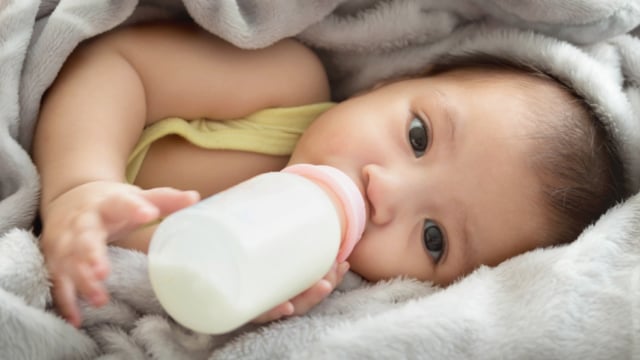The practice of bottle-feeding in children becomes one of the world’s most challenging issues. In Indonesia, there is a drastic increase of bottle feeding, and this is contrary to government programs to minimize infant feeding practices. There was an increase of 19.7% from 1991 to 2017. There are adverse effects of bottle feeding that have an impact on mortality and morbidity. It is associated with an increase in changing dental structures, dental caries, suction ability deficits, and infant response. Various bacteria can be transferred through the feeding of milk bottles to the baby’s mouth. Although there have been many studies explaining the impact of the feeding of bottled milk, there are mothers who do this practice primarily in children aged 0-23 months.
Berde revealed that in 2018 several factors increase the risk of bottle-feeding associated with factors such as working mothers, childbirth in hospitals, education status, wealth status. World Health Organization (WHO) recommends exclusive BREASTfeeding as the key nutrient during the early stages of children. Considering the practice of bottle feeding in Indonesia is quite high, the research was conducted to test the prevalence and factors associated with bottle feeding in children aged 0-23 months in Indonesia.
This research uses 2017 Demographics and Health survey data with a cross-sectional research design. The 15-49-year-old mother with a 0-23-month-old child is involved in the study. The results showed that several factors are determining the provision of milk bottles in children aged 0-23 months, such as working mother, wealth status, urban life, sewer, sex, and children aged 6-23 months. Most of them are living in urban areas and associated with the ease of access to bottle feeding. Exposure to high-level advertisements in urban areas is highly associated with bottle feeding. As the child’s age also becomes a deciding factor in giving bottle feeding, that allows children to have alternative food other than breast milk. This is supported by the fact that the use of bottles is associated with the provision of additional foods such as water, tea, and processed milk intake, which is usually given when the child grows older.
Based on the results of the study, bottle feeding has been significantly associated with mother and child factors and the index of urban wealth and residence. Policies to minimize the rate of feeding of bottle feeding should be increased. Besides, advocacy campaigns should be carried out not only by the government but also private sector and community in raising awareness of exclusive breastfeeding as well as a commitment to avoid bottle feeding.
Writers: Nasrul, N., Hafid, F., Ramadan, K., Elizadiani Suza, D., & Efendi, F
Link: https://www.sciencedirect.com/science/article/abs/pii/S0190740920305983
Nasrul, N., Hafid, F., Ramadan, K., Elizadiani Suza, D., & Efendi, F. (2020). Factors associated with bottle feeding in children aged 0 – 23 months in Indonesia. Children and Youth Services Review, 116 (April), 105251. https://doi.org/10.1016/j.childyouth.2020.105251





